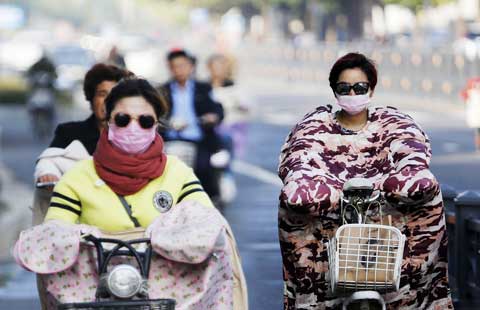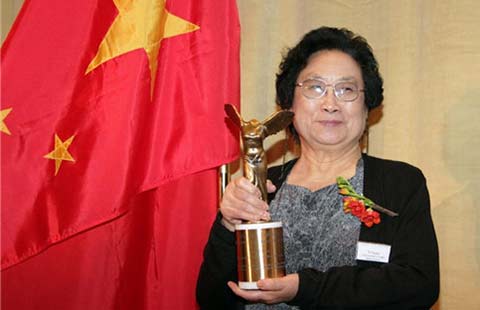Power use, freight volume show positive change amid economic restructuring
Updated: 2015-10-09 20:36
By Wang Bao'an(chinadaily.com.cn)
|
||||||||
ent has advocated to transform coal into electricity on the same site, and changed "shipping western coal to the east" to "transmitting electricity from the west to the east", which has reduced coal freight volume to some extent. In 2014, coal freight volume fell by 2.3 percent over the previous year, making the railway freight volume drop by 1.2 percent. From January 2015 to August2015, the coal freight volume dropped by 11.4 percent, leading to the decrease in railway freight volume by 6.1 percent.
Diversified transportation offered more choices and cut railway freight volume. As China's infrastructure improves gradually, the rapid development of highway, waterway and civil aviation has diverted demand for railway freight. Compared with railway freight, the highway transportation has a significant advantage in its flexibility and convenience, leading to a lower percentage of railway freight in the transportation of light industry products. In 2014, the light industry products accounted for 13.6 percent in the railway freight volume, down 0.9 percent over 2010. The proportion of railway freight volume to the total freight volume dropped to 8.7 percent, down 2.5 percent over 2010. The proportion of highway transportation volume is 76.1 percent, 0.6 percent up from 2010.
Optimization of the import and industrial layout of resource products diminished demand for railway freight to some extent. As commodity prices in the international market remain low, companies in the eastern coastal areas increase imports resource products such as coal and iron ores, which reduced the demand to transport resource products from mid-western regions by rail. In 2014, China's import of iron ore increased by 50.7 percent, grain by 2.4 times, and crude oil 28.9 percent over 2010. The imports were mostly by water, so waterway transportation in 2014 accounted for 13.7 percent, 2 percentage points higher than that of 2010.
At the same time, the mid-western regions give full play to their late-development advantage, attracting labor-intensive companies to move away from the east. As the manufacturing companies become closer to the origins of raw materials, demands for long-distance railway freight transportation also decrease. In a word, as the market mechanism plays a bigger role in allocation of resources, the companies, project arrangements, import sites and transportation means are all changing quickly. Therefore, the volume of different transportation means will definitely adjust accordingly.
In conclusion, the relationship of between China's economic growth and power consumption as well as railway freight volume is given new connotation in the "new normal" phase. The elasticity between them has changed, but the inherent logic has not changed. It is not negation of application of indicators, but is an objective manifestation of the progress made amid the structural adjustment when economic development enters a new stage.
In recent years, as China's economic development enters the "new normal" phase and the economic environment both at home and abroad experience profound changes, the endowment conditions of element resources gradually change. The economic restructuring and transformation in China steps up, leading to historic, long-term trend and regular changes of the relationship between different indicators formed in the high-growth-rate period. This change marks the shifts of growth pace, of optimized structure and of driving force, and it is in line with the direction of macro-management and policy objectives.
The author is the director of the National Bureau of Statistics.

 Students join outdoor courses in countryside
Students join outdoor courses in countryside
 Stewardesses trained to show sweet smile
Stewardesses trained to show sweet smile
 Tourist attractions receive30 million visitors during Golden Week
Tourist attractions receive30 million visitors during Golden Week
 One killed in Northern Arizona University shooting
One killed in Northern Arizona University shooting
 Top 10 most competitive economies
Top 10 most competitive economies
 Cold wave sweeps through China
Cold wave sweeps through China
 Taking a peek
Taking a peek
 News you don't wanna miss over the National Day holiday
News you don't wanna miss over the National Day holiday
Most Viewed
Editor's Picks

|

|

|

|

|

|
Today's Top News
Tu first Chinese to win Nobel Prize in Medicine
Huntsman says Sino-US relationship needs common goals
Xi pledges $2 billion to help developing countries
Young people from US look forward to Xi's state visit: Survey
US to accept more refugees than planned
Li calls on State-owned firms to tap more global markets
Apple's iOS App Store suffers first major attack
Japan enacts new security laws to overturn postwar pacifism
US Weekly

|

|








